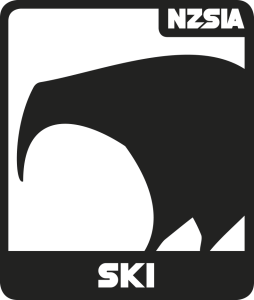Flatland Manoeuvres
 What, Why, How
What, Why, How
What
Exploring a range of flatland tricks including, but not limited to, presses, butters, whirlybirds, tip drags.
Why
To safely introduce a range of skills and a freedom of movement that are at the core of freestyle skiing outside of the park environment.
How
When starting to introduce the concept of freeskiing to our students we must choose tricks appropriate to our students’ skill level. This could be as simple as continuing a turn all the way to switch (backwards) without leaving the snow, or as complex as a sequence of acrobatic manoeuvres such as tail/nose press and flatland spins, to name a few. Make sure the student has significant ‘buy-in’ to the task you set as commitment is key through all areas of freestyle skiing. Just as we do in all our lessons, be sure to break the chosen skill down into an easy-to-follow progression for our students. For example:
Flatland spins (whirlybirds):
- Establish concept, demonstrate and attempt
- Try a J-turn all the way to face uphill
- Focus on the origin of rotation, leading with the head and shoulders
- Keep edge angles low and identify when skis must be flat
- Use hands to help guide shoulders
- Encourage fore/aft and lateral movement from ‘corner to corner’ to assist with the spin
Butters:
- Start with a demonstration and attempt
- When stationary, play with presses using a range of fore/aft movement to shift weight along the length of the ski
- Ensure some level of flexion remains through ankles, knees and hips to assist in ‘pulling up’ tips or tails as weight moves back or forward respectively
- Try in a traverse or fall line of a gentle slope
- Establish good set technique for the spin. Open arms, head and shoulders leading
- Attempt a 90º butter in slow traverse spinning in the direction of travel (left spin in when traversing left and vice versa)
- Check for timing of press and spin
- Increase rate and range of upper body rotation to bring butter to 180º
- Take form traverse to fall line, rollers and more

 Technical Know-how
Technical Know-how
Skills
Within freeskiing we often bend and blend the rules of technical skiing depending on our desired outcome. Despite this, the skills relevant to strong skiing are the same here. Dynamic balance both fore/aft and laterally, the ability to use our legs to control our edge angles, and control of rotation between upper and lower body are all in use and vitally important as we shake up the norm and develop our freeskiers.
Ski Snow Interaction
Depending upon our chosen manoeuvres skis may be flat, edged, even weighted or off the ground. Be sure to fully understand the task to best teach, analyse and give feedback to our students.
ATTL (Approach, Takeoff, Trick, Landing)
Speed, terrain and trick may all change regularly. A good focus on the progressional steps for each trick is needed and our approach should be adjusted accordingly. Tricks are specific for the trick being learned and the related skills should be identified. Takeoffs and landings are only relevant to certain flatland tricks and can be discussed if necessary.

 Teaching Tactics
Teaching Tactics
Terrain
Choose terrain that our students are comfortable on. This is important as a lot of our tricks are used to challenge the established movements in their skiing. Depending upon the tricks we are learning, terrain may be flatter green, steeper blue runs or even the magic carpet/learners’ area.
Class Handling
A lot of flatland tricks lead us to move in unexpected ways for those around us. Be sure to practise and challenge skills in areas away from the busy flow of traffic. Be sure to check uphill before setting off and encourage the same from your students.
Example
* The outside/in concept is when tricks and skills are developed outside of the terrain park in a controlled, safe environment where it is easier to manage risk and anxiety. Once students are comfortable with the trick or skill then it can be taken into the terrain park.

